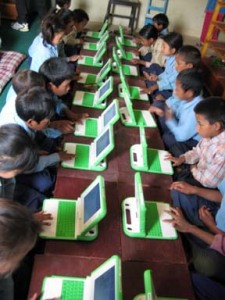Plane Crash in Nepal. Eighteen Dead.
A plane crashed in Nepal yesterday. Eighteen people, mostly tourists, died. Yeti Airlines twin otter went down in Lukla airport, the nearest to the Everest base camp, one of the most visited destinations in the country. Here are photographs of the scene.
Prachanda: WILL TURN NEPAL INTO WORLD’S DUTY FREE COUNTRY
Standing in front almost 500 people, Prime Minister Pushpa Kamal Dahal, Nepal’s maoist leader appeared calm and determined. In black suit and red tie with an oversized knot, the man who once commanded thousands of Nepali soldiers into bloody battles, sported a smile. He read his speech in English with a strong Nepali accent, which was almost comical. But his tone was anything but light-hearted.
Prachanda stressed on economic development and said he will turn Nepal into the “world’s duty-free country”. In just five years, Nepal will prosper with strict rule of law, he said. He harped about Nepal’s water resources, scenic beauty, its ethnic diversity, and everthing that he said should have made Nepal the most attractive place to live in.
Prachanda’s speech, though full of promises, did not address issues gnawing at the country. But he did not share the relief plan for the Kosi flood victims; did not reveal the federal future of Nepal; did not address the human rights violation; and forgot about people who disappeared during the decade-long war.
But watching the new prime minister ‘s confidence, patriotism and promises on Samudaya.org, I almost want to believe I’m looking at a leader who can deliver.
Fatalism Never Dies In Nepal
As journalists constantly struggle to seek fair, reliable and relevant sources for their reports, Dhruba Adhikary, a Nepali journalist finds an easy way out. Adhikary writes a report about the country’s future based on an astrologer’s predictions. The world reads it on Asian Times.
Fatalism never dies in Nepal. Excerpts of Adhikary’s report:
It all began when Bhimeshwar (one of the manifestations of Lord Shiva), housed in a temple in the eastern hill district of Dolakha, oozed what looked like beads of perspiration, attracting thousands of villagers. Another inauspicious moment for the monarchy surfaced when the pole of the chariot of the deity Machhindranath fell to the ground while being taken around the Kathmandu Valley a couple of months ago.
………
Astrologer Gopal Baabaa, in a wide-ranging interview published in Tarun, a Nepali-language weekly, said Nepal is destined to remain in bad shape until mid-March 2010.
Famine in Nepal: It’s SERIOUS!!
People in western Nepal are starving. Elected representatives, meanwhile, are trying to settle the political squabble in Kathmandu.
There’s no government to make administrative decisions, and it’s already too late for people whose crops have died and who cannot afford the steep price of rice and other grains.
Jamauti Kami in Sokat, Accham, southern-west Nepal, was cooking the last cup rice for her starving children when Charles Haviland of the BBC, visited her for his report published on July 10.
Thirteen-year-old Dhirendra Nepali of Kolti, Bajura, western Nepal, had eaten two slices of bread the day before Kantipur interviewed him on July 7.
Ram Chandra Jyoti of Rami Danda, Jajarkot was looking for rice to feed his family, the last week of June, when he talked to Rajendra Karki of Nepali Times.
Nepal Prime Minister Steps Down
Girija Prasad Koirala, Nepal’s 83-year-old prime minister, gave up his position on June 26. This move brings the constituent assembly of the country closer to forming the new federal republic government, reported Nepali Times. It also ends the political debate that followed the election.
One Laptop Per Nepali Child Faces Challenges. Q and A.
Open Learning Exchange (OLE) Nepal, an organization that is distributing XO laptops (E-Paati) and designing programs to suit Nepali children, is facing challenges.
At home, OLE Nepal is hurdling the country’s poor education system. On the other side, One Laptop Per Child, based in Massachusetts, U.S.A, does not want to ship laptops in smaller quantities, and hence OLE Nepal cannot expand the project beyond 135 computers they have distributed so far.
Rabi Karmacharya, OLE Nepal’s director, answered questions via e-mail.
Q: 135 computers distributed. How many more are you getting and by when?
A: The next deployment will take place at the beginning of the next school session, April 2009. Since our goal is to integrate the laptops in daily classroom teaching-learning process, it is important to introduce laptops when the school year starts, and not in the middle of the school year. If the laptops are viewed as supplementary education tool, then the chances of them being used regularly in classrooms by teachers are slim. Hence, we focus on turning the laptops into effective tools for teachers and students to use in effective teaching-learning process.
The size of the next deployment cannot be ascertained until we pick the schools. Class sizes vary widely amongst schools in various regions of the country. Our plan is to reach out to 10-12 schools in about five districts. We will soon sit with the government to work on an action plan, and hope to be able to come up with a draft in the near future. That will give us a rough estimate on the number of laptops needed. Based on our initial rough estimate, the number will be anywhere between 1500 – 3000.
Q: How’s the support from Nepal government?
A: The Departmet of Education, Nepal, is quite interested in the idea. We have signed an agreement with them to do a pilot project. However, things don’t happen as quickly and as easily as we would like. Furthermore, they have yet to allocate funds in their budget for this project. So, in that sense, they have little invested on the initiative except verbal commitments.
Q: What are your main challenges?
A: Many. The challenge here is to improve Nepal’s education system. There are things that the OLPC initiative can improve. But there are many inherent problems that laptops can never solve. The main challenge is to convince the stakeholders to improve the other issues surrounding absenteeism, low teacher morale, lack of trained teachers, etc so that laptops can do what they are supposed to do – improve quality of education and lower disparity in access to education.
Indian Press Reports: Nepali Prime Minister To Give In
Girija Prasad Koirala, 83, a long standing prime minister of Nepal, is about to give up his prime ministership, amongst much protest from political parties, mainly the Maoists, reported Hindustan Times and Press Trust of India today.
Reports from the Indian press, if true, may come as a relief to Nepalese who are hoping to move ahead from a political deadlock after the April election. This is a step closer to forming a new republican government in Nepal. After the election, in which the Maoists won majority of votes, political parties have been arguing over who should be the first president of Nepal. Koirala belongs to Nepali Congress, a party that did not receive near as many votes as the Maoists. Nevertheless, Prime Minister Koirala did not step down, nor did his party join the Maoist and the Nepali Communist (UML) to form a new coalition government.
The election may have been over, but there’s no government that has started working on issues, such as food emergency and strikes related to gas prices, affecting the daily lives of Nepali people.
Maoists say: Shut Down Kantipur. What’s the future of Nepal’s Press Freedom?
The Red Star, a pro-Maoist Web site, says media organization such as Kantipur, a widely popular source of news in Nepal, should be shut down.
Roshan Kissoon, who claims to have taught English to Maoists (see the given Web site), says newspapers which cater to only a specific class of the soceity should not be allowed in business. In the opinion section of The Red Star, Kissoon also writes such news outlets should be thwarted as it does not represent the poor. Kissoon claims to be an international freelance journalist. He is clearly biased towards the red party.
Maoist, popularly elected largest party and a powerful force in the new government, is allowing opinions about suppressing a media organization, that has been a landmark in press freedom since the early 1990’s. When the powerful speak of suppression, we ought to be alert.
It is important to note that newspapers, big or small, have not been threatened openly in the past, regardless of political turmoil and unstable governments.
A reason Maoists were elected by popular vote is partly because of press coverage provided by newspapers like Kantipur, and a platform to voice opinions by Maoist leaders Baburam and Prachanda.
Today they have openly denounced Kantipur, in the name of social equality. Tomorrow, it may be some other news organization with another radical reasoning. News organizations such as Kantipur may not be completely free of biases, but these are institutions that have long given an outlet to express thoughts, have presented different viewpoints, and been an icon of freedom of expression.
Nepal ranks 137th on the press freedom index, according to Reporters Without Borders, an international press freedom advocacy group. During the Maoist revolution, many journalists were killed, mutated and threatened. After the ceasefire, it’s press freedom is recovering. But with the kind of mindset pro-Maoists are floating, it certainly compels a journalist to be weary about press freedom in the red party led regime.
Toilet Treatment At Nepal’s Ministry
Matrika Yadav, a frustrated Nepali Maoist minister for Forest and Soil Conservation, locked his subordinate in a toilet, for an hour and half, in charges of corruption, reported BBC today.
People have long given up hope on Nepal’s justice system. It’s slow and inefficient. And it’s not only general citizens who’ve lost faith in the system, but high-ranking government officials too.
4,000 government workers went on a strike and asked Mr. Yadav’s apology, protesting the toiltet treatment. But the minister was unapologetic and acknowledged his action, reported NepalNews.com., and said he was not guilty for using unconventional method against Dundu Raj Ghimire for not following his orders. On the contrary, Mr. Yadav said he will not hesitate to do it again, if need be. He said he was giving Ghimire a taste of his own foul medicine.
But there’s no word from Ghimire, the victim.
After reading the news on BBC Web site, a friend said, “It happens only in Nepal.”
Laptops For Each Nepali Child
 Children in some rural schools in Nepal are using laptops, designed especially for developing countries, to help learn better.
Children in some rural schools in Nepal are using laptops, designed especially for developing countries, to help learn better.
They may not have access to televisions, black boards, books, chairs in classrooms or even electrcity. But these green computers, that can easily pass for toy laptops, are perfect for children in rural mountains. “XO”, which is what the laptops are called, can be used by children as young as 8-years- old. They’re children-frienly and New York Times described it as “spillproof, rainproof, dustproof and fallproof.”
Currently it cost about $200 each.
One Laptop Per Child, a company based in Cambridge, Massachusetts, designed the machine with the intention of making education easy and accessible for children all over the world, especially in the third world.
Developers believe that people in poor countries will jump the technology gap, as the new generation gets access to affordable machines.
Although in trial phase, this is a huge move for Nepal. The design of the computers encourage children to be creativite, and defies the old-school style of learning by committing to memory. Unfortunately, there’s not enough media coverage about this development. An article in Nepali Times wrote a review of the approach. Apart from that, there’s not much media attention and public dialogue about the project that can revolutionize the poor Nepali education system.
Stay tuned for more pictures, comments and updates from Open Learning Exchange (OLE) – Nepal, a key organization to implement the one-laptop-per-child project.



leave a comment